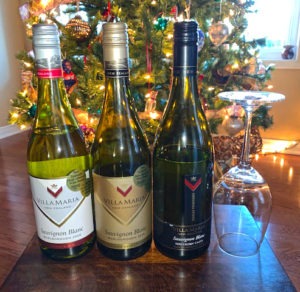
Three tiers of Villa Maria Sauvignon: Private Bin, Cellar Selection and Southern Clays.
Happy Lockdown Monday, everyone! If there were ever a time we needed to raise a glass (or three) to toast our loved ones, it’s friggin’ 2020.
The concept of holiday dinners without our closest friends and family is simply depressing. But if you’re searching for some silver lining amid this pandemic, it might be this: Whereas you typically might be lucky to secure a five-ounce glass of wine after passing your prized bottle of wine around the table, with the current limited-gathering bylaws you’re going to get to enjoy a lot more of that celebratory bottle this year!
And this is indeed the time to spoil yourself and not to reach for your usual go-to vino.
“Christmas dinner is a great example,” offers Rod Hallam, Canadian Market Manager for highly lauded New Zealand winery Villa Maria. “My wife’s fanatical about it—she’ll get an organic turkey, which is like two or three times the price. You cook it all day. But then many people will still reach for their ‘old standard’ wine. Why not elevate it?”
That doesn’t necessarily mean you have to splurge for a $100+ bottle, Hallam stresses. Simply moving up one or two tiers from your usual go-to vino can make a big difference.
Hallam, dropped by a couple weeks ago to make that very point. He showed up with a range of both Villa Maria’s noted Sauvignon Blancs and the winery’s hugely underrated Chardonnays.
 Let’s start with the 2019 Villa Maria’s Private Bin Sauvignon Blanc. Featuring a regular price of $17.95 (but on sale now for $15.95), it’s a constant among my annual list of Best 36 Wines for Under $18, and the 2019 is a particularly good vintage. Ripe citrus, grapefruit, passionfruit, lime, lemongrass, herbs, and surprisingly good length. Great with white meat, seafood and salads. There are like a million cases of this made annually at Villa Maria.
Let’s start with the 2019 Villa Maria’s Private Bin Sauvignon Blanc. Featuring a regular price of $17.95 (but on sale now for $15.95), it’s a constant among my annual list of Best 36 Wines for Under $18, and the 2019 is a particularly good vintage. Ripe citrus, grapefruit, passionfruit, lime, lemongrass, herbs, and surprisingly good length. Great with white meat, seafood and salads. There are like a million cases of this made annually at Villa Maria.
 But what do you get when you move up one tier to their Cellar Selection Sauvignon Blanc? For $21.95, we’ve gone from a million cases all the way down to 30,000 cases. There’s still that pungent, zesty freshness and fruit we know and love from Villa Maria, but this wine is a more careful blend of grapes from just the warmer Wairau Valley (to express concentrated riper tropical fruits) and the cooler windier Awatere Valley (with the trademark herbal and bell pepper notes). The wine is also left to mature on yeast lees for a period of time to build palate weight and texture. There’s also a flinty, mineral element that has now been introduced.
But what do you get when you move up one tier to their Cellar Selection Sauvignon Blanc? For $21.95, we’ve gone from a million cases all the way down to 30,000 cases. There’s still that pungent, zesty freshness and fruit we know and love from Villa Maria, but this wine is a more careful blend of grapes from just the warmer Wairau Valley (to express concentrated riper tropical fruits) and the cooler windier Awatere Valley (with the trademark herbal and bell pepper notes). The wine is also left to mature on yeast lees for a period of time to build palate weight and texture. There’s also a flinty, mineral element that has now been introduced.
 But then I move to a single-vineyard Sauvignon Blanc, in this case Villa Maria’s Southern Clays, a warm, sheltered site situated at the base of the dry eastern foothills of Malborough’s Wairau Valley. As the name suggests, the soil is predominantly clay, which retains moisture throughout the growing season (which Sauvignon Blanc likes), producing intense textural wines. For $29.95, this is a clear step up in sophistication. There are notes of thyme and rosemary, with less of that puckering acidity and more of the fruit leaning to the tropical side, like mango and apricots. The palate is rich and weighty. There’s still that grapefruit-zest acidity of Sauvignon Blanc, but now with greater length. And the food-pairing options have opened up significantly, since you don’t have that circus bite fighting many of your side dishes, which can be the case with the more entry-level Sauv Blancs. This is something to savour and enjoy in the glass. And by the way, we’ve now gone all the way from 1 million to just 1,000 cases now!
But then I move to a single-vineyard Sauvignon Blanc, in this case Villa Maria’s Southern Clays, a warm, sheltered site situated at the base of the dry eastern foothills of Malborough’s Wairau Valley. As the name suggests, the soil is predominantly clay, which retains moisture throughout the growing season (which Sauvignon Blanc likes), producing intense textural wines. For $29.95, this is a clear step up in sophistication. There are notes of thyme and rosemary, with less of that puckering acidity and more of the fruit leaning to the tropical side, like mango and apricots. The palate is rich and weighty. There’s still that grapefruit-zest acidity of Sauvignon Blanc, but now with greater length. And the food-pairing options have opened up significantly, since you don’t have that circus bite fighting many of your side dishes, which can be the case with the more entry-level Sauv Blancs. This is something to savour and enjoy in the glass. And by the way, we’ve now gone all the way from 1 million to just 1,000 cases now!
What’s a good word to describe Villa Maria Sauvignon Blanc at this level? “Undervalued,” says Hallam. Yes, he’s arguably biased. But then Villa Maria’s 2018 Taylor’s Pass Sauvignon Blanc, another $29.95 single-vineyard wine, was the only Sauv Blanc to claim Best in Show at last year’s Decanter World Wine Awards. “You’re getting a world-class wine for under $30!” Hallam notes.
UNDERRATED CHARDONNAY
As I switch to the Chardonnays, there’s a similar drop in production totals—and corresponding increase in quality and complexity—as you step up the ladder.
 First up is the 2019 Villa Maria Private Bin East Coast Chardonnay at $17.95. There are roughly 30,000 cases of this Private Bin range of wine made. Orange rind and melon, slightly mineral, slightly creamy, with perhaps a hint of some wood chips thrown into the mix. Good solid value when sipping on its own or with chicken, seafood and salads.
First up is the 2019 Villa Maria Private Bin East Coast Chardonnay at $17.95. There are roughly 30,000 cases of this Private Bin range of wine made. Orange rind and melon, slightly mineral, slightly creamy, with perhaps a hint of some wood chips thrown into the mix. Good solid value when sipping on its own or with chicken, seafood and salads.
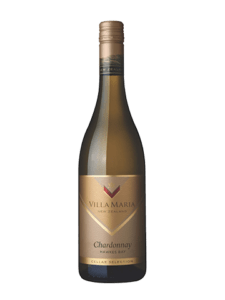 Next in line is the 2018 Hawkes Bay Cellar Selection Chardonnay at $21.95. Just 4,000 cases here annually! A much different wine here. If you’ve ever sampled both, there’s no way you’d ever blind taste these two wines and get them mixed up. First of all, this one has a more golden hue in the glass. Instead of tart green apple on the nose, there are notes of cashews, almonds, oak spice and a freshly struck match. The texture is weightier, but still with a lemony-mineral element on the palate and crisp acidity.
Next in line is the 2018 Hawkes Bay Cellar Selection Chardonnay at $21.95. Just 4,000 cases here annually! A much different wine here. If you’ve ever sampled both, there’s no way you’d ever blind taste these two wines and get them mixed up. First of all, this one has a more golden hue in the glass. Instead of tart green apple on the nose, there are notes of cashews, almonds, oak spice and a freshly struck match. The texture is weightier, but still with a lemony-mineral element on the palate and crisp acidity.
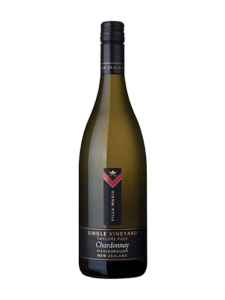 Finally, I arrive at the 2018 Taylors Pass Chardonnay. It’s $33.95, which actually seems markedly underpriced, given that there’s a paltry 400 cases made of this wine. From the north bank of Malborough’s Awatere River, this is classic Chardonnay on the nose, with oak, peach, soft citrus and smoke. There’s also a little funky evidence in the glass that fermentation began with wild yeast before moving to more cultured strains. In the glass, though, the wine is leaner than that evocative nose would suggest—more of a refined Burgundian style—mid-weight, with the all the fat trimmed away, lovely acidity and a distinct flinty, mineral spine. The oak that was clear on the nose is not as present on the tongue—you can really tell that there’s some tender loving care that went into the 11-month mix of new and seasoned French oak here. It was bottled 19 months ago and has continued to integrate during that time. It’s actually lighter hued than the Cellar Selection Chardonnay—sort of a N diamond in colour.
Finally, I arrive at the 2018 Taylors Pass Chardonnay. It’s $33.95, which actually seems markedly underpriced, given that there’s a paltry 400 cases made of this wine. From the north bank of Malborough’s Awatere River, this is classic Chardonnay on the nose, with oak, peach, soft citrus and smoke. There’s also a little funky evidence in the glass that fermentation began with wild yeast before moving to more cultured strains. In the glass, though, the wine is leaner than that evocative nose would suggest—more of a refined Burgundian style—mid-weight, with the all the fat trimmed away, lovely acidity and a distinct flinty, mineral spine. The oak that was clear on the nose is not as present on the tongue—you can really tell that there’s some tender loving care that went into the 11-month mix of new and seasoned French oak here. It was bottled 19 months ago and has continued to integrate during that time. It’s actually lighter hued than the Cellar Selection Chardonnay—sort of a N diamond in colour.
Something else to love? All six of these wines are screwcaps.
SMALL PRICE TO PAY
While $30+ might be slightly out of many people’s comfort zone, it’s such a small price to pay when you consider the personalized care from the winemaking team.
“As they see prices go up in a wine, some consumers may feel it’s a branding exercise or a classist thing, believing that by paying a little more—or significantly more—that they’re not really getting that much more in quality,” Hallam notes. “But in most cases I’ve experienced, if wineries are putting a significant investment into making higher-tier wines, there is a significant difference as you progress up the tiers.
“You go down the line, from millions of cases, to thousands of cases, to hundreds of cases,” Hallam explains. The sheer volume of the Private Bin wine production generates most of the income for Villa Maria, allowing the company’s winemakers to pursue their more exclusive “hobby” wines, he notes. “It starts in the vineyard for the higher-end wines—specifically managed to be lower cropping, looking to get the most expression out of them. There’s significantly more elbow grease and love that goes into it as you move up. The Southern Clays, for example, is the last Sauvignon Blanc to go into he bottle, because they’re really looking to enhance those elements from that area, with lots of lees stirring and more time in stainless steel to really build up the textural weight.
“You may go into the wine business with the thought of making money, but it’s really a passion at the end,” Hallam muses. “For the amount that’s produced, it’s comparably a drop in the bucket in terms of profitability. In terms of true cost, you wonder if they lose money on some of those wines. You have to separate fruit out. You can’t ferment in the same vats. You have special treatments. All the extra work that has to go into them is difficult to account for. Just think of all the set-up cost and time in taking the production line apart and retooling for just 400 cases of Chardonnay.”
Not to mention all the extra time winemakers spend in both the field and the cellar refining their more exclusive wines.
“You’re adding layers as you move up,” Hallam notes. “You get more of an expression of the particular terroir—that sense of place—and more enjoyment. It’s hard to think of in a consumer perspective, because it just comes in a bottle with tasting notes on the back. But when you visit a winery and meet the winemakers, you realize how hard they’re working to develop these wines, and how much love and care goes into their premium ranges. There’s just a small amount of these wines produced.”
SAMPLING AT HOME
So feel free to experiment with the next level of your favourite wine as you visit the LCBO or order online from your local winery. Maybe try sampling a trio, as I’ve done, to observe the differences as you progress up the chain (you can always drop half a bottle off to a friend and share the experience virtually.) You might discover that next tier is worth the price and more. Or perhaps you’ll find out that you preferred that lower-rung wine all along!
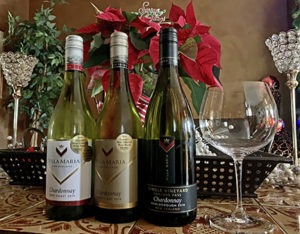
A trio of well-priced tiers of Villa Maria Chardonnay: Private Bin 2019, Cellar Selection 2018 and Taylors Pass 2018.
To close, and I bang this drum a lot, try as best you can to pair your wine with the right glass. It can make a world of difference. A slightly oaked Chardonnay, for example, begs for a wide-topped Chardonnay glass, whereas its evocative notes can be entirely muted in a thin Riesling glass.
And please serve your wine at the right temperature. Don’t serve these Sauvignon Blancs or Chardonnays directly out of fridge—let them warm up a few minutes before tipping it into your glass and onto your tongue. (And, conversely, chill your reds for 20 minutes before serving them.)
Merry Christmas, and here’s hoping you make the best of the holiday season in these challenging times.
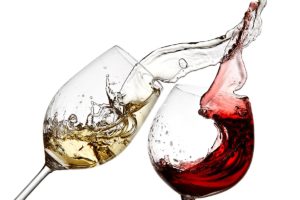
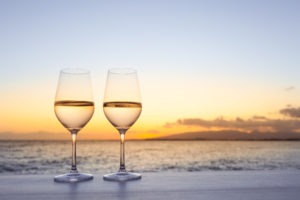
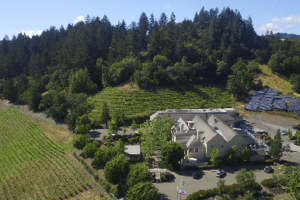
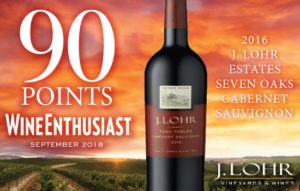
Leave a Reply
Your email is safe with us.